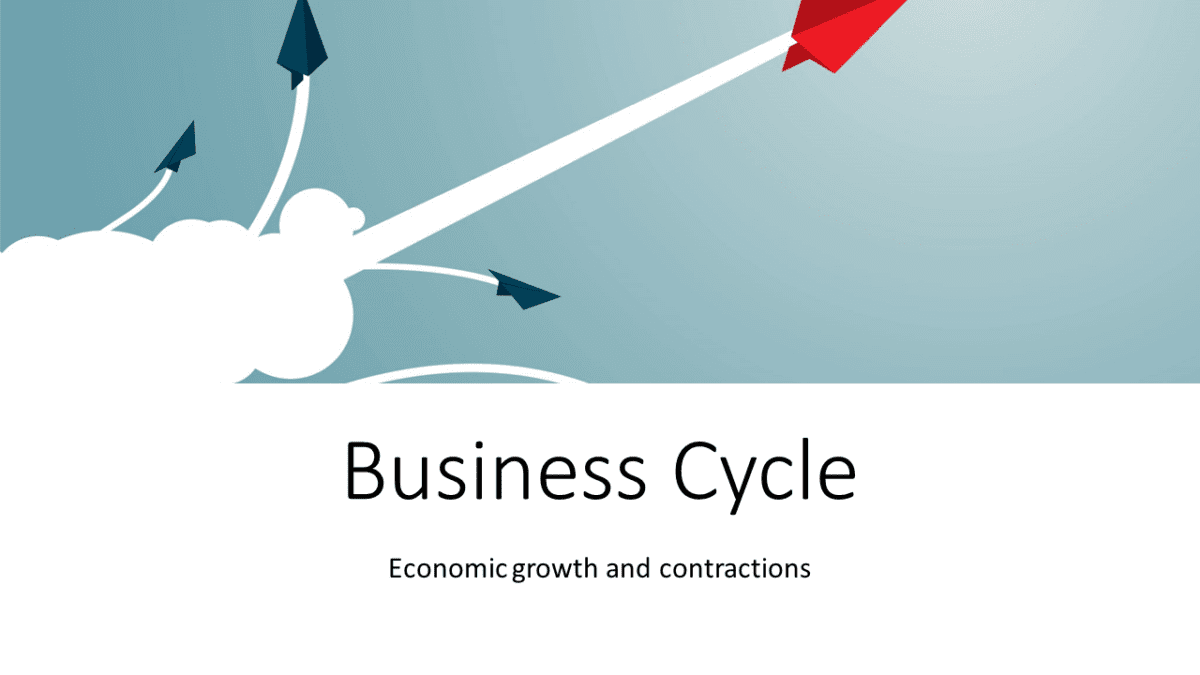The Business Cycle
GDP trends upward or downward according to its natural long-term growth rate during a business cycle. Economic activity expands and contracts over time because of this theory.
For a business cycle to be complete, it must undergo at least one boom and one contraction in succession. In business cycle theory, the length of the business cycle is the number of years it takes to complete this sequence.
There is a boom when economic growth is rapid, while a recession when growth is relatively stagnant. Inflation-adjusted real GDP growth is used to measure these.
Business Cycle Stages
A steady growth line can be seen in the diagram above. There is a movement about the line during the business cycle. Each stage of the business cycle is described in more detail below:
1. Expansion
Business cycles begin with expansion. Economic indicators will also improve if employment, income, output, wages, profits, and consumption increase. A high velocity of money supply, high investment, and timely debt repayment are all indicators of a healthy economy. During favorable economic conditions, this process continues.
2. Peak
During the second stage of the business cycle, the economy reaches saturation, or peak. The growth limit has been reached. At this point, economic indicators are at their peak and do not show any further growth. There is a peak in prices. Economic growth has reversed at this stage. Budgets are restructured at this point by consumers.
3. Recession
Recessions follow peak phases. This phase is characterized by a rapid and steady decline in demand for goods and services. There is an excess supply on the market because producers do not notice the decrease in demand immediately and continue to produce. The price of goods tends to decline. Consequently, income, output, wages, and any other positive economic indicators begin to fall.
4. Depression
As unemployment rises, so does poverty. An economy in depression is one that is experiencing continuous declines in growth.
5. Trough
The growth rate of the economy becomes negative during the depression stage. Prices for factors, demand for goods and services, and supply of goods and services contract further until they reach their lowest levels. A trough eventually occurs in the economy. An economy reaches its negative saturation point at this point. The national income and expenditure have been substantially depleted.
6. Recovery
The economy recovers after the trough. As a result of this phase, the economy turns around and begins to grow again. As a result of low prices, demand begins to increase and supply increases as well. There is an increase in production as well as a positive attitude toward investment and employment in the population.
In addition to increasing employment, bankers’ cash balances also indicate positive signals in lending. New investments are made in the production process during this phase as depreciated capital is replaced. In order to achieve steady growth levels, the recovery must continue.
The boom and contraction of business have now completed one full cycle. Peaks and troughs are extreme points.
A look at economists’ explanations
Short-term equilibrium states are created during business cycles due to fluctuations in aggregate demand, which differ from full employment states. As a result, the economy enters a short-term equilibrium due to fluctuations in price levels.
There is no guarantee that Keynesian models indicate periodic business cycles, but they imply that shocks are not necessarily followed by cyclical responses. Investing determines the level of aggregate output, so the extent of these fluctuations depends on it.
Keynesian theory is criticized by economists affiliated with the Chicago School of Economics like Finn E. Kydland and Edward C. Prescott. A technological shock, such as innovation, is more likely to cause fluctuations in the growth of an economy than monetary shocks.


